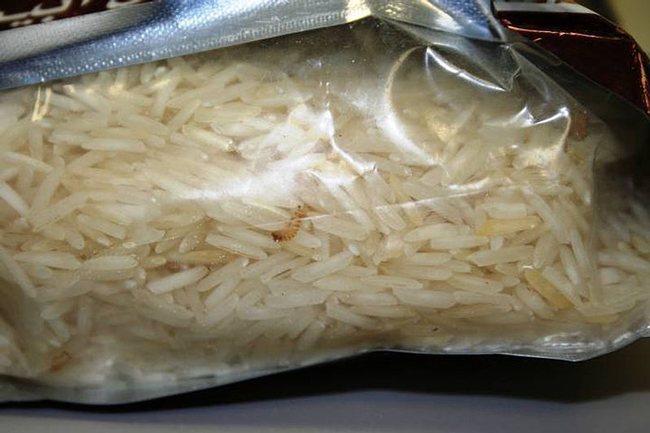Posts Tagged: John Kabashima
UC Cooperative Extension uses UC Irvine campus as a living lab
"The beauty of UCI is that it's a university, and they're used to researchers," said John Kabashima, an environmental horticulture advisor and entomologist with the UC Cooperative Extension in Orange County.
Another scientist on the project is Akif Eskalen, UC Cooperative Extension plant pathology specialist based at UC Riverside. Eskalen first identified the sesame seed-sized beetle in a South Gate avocado tree in 2012.
Eskalen selected 130 sycamores at UCI for his experiment and divided them into 13 groups of 10. Four of the groups were treated with different insecticides; three were treated with different fungicides; and four others got one of each. Another group was given a beneficial bacteria found in some California trees that's thought to kill the fungus. A final group is serving as a control and received no treatment at all.
The scientists are allowed to cut down and section the trees, sample them, and even leave some infested trees alone. Having this flexibility is essential to understanding the success — or failure — of a given pesticide, Kabashima said: "That's why we're learning so much here at UCI."
Team of scientists tackle shot hole borer at UC Irvine
When trees at UC Irvine became infested with polyphagous shot hole borer, the university assembled a team of scientists to use the campus as a living laboratory to study ways to protect trees from the pest, reported Sanden Totten on KPCC, the public radio station in Southern California.
Two members of the team are UC Agriculture and Natural Resources experts: Akif Eskalen, UC ANR Cooperative Extension specialist in the Department of Plant Pathology at UC Riverside, and John Kabashima, UC ANR farm advisor emeritus.
PSHB, a native of Asia, is killing hundreds of trees at UCI and thousands of trees in Orange, Los Angeles, and San Diego counties, including ornamental trees in urban landscapes, avocado and other farm trees in agricultural areas, and native tree species on wildland.
"The value of trees killed by PSHB will be in the millions of dollars," Kabashima said.
The pest damages trees by boring into the bark and carrying a fungus inside.
"They actually farm that fungus as a food source," Eskalen said.
The fungus clogs the water-conducting tissue inside the tree, leading to the tree's death.
The scientists are battling the pest on many fronts, injecting various insecticide and fungicide combinations to kill the pest and fungus, and even limiting water to some trees to see if dry conditions will have an impact on the pest and fungus. However, the scientists acknowledge the complexity of the problem.
"When we do a test on sycamores that does not necessarily translate to what's going to happen when we treat an oak," Kabashima said.
For that reason, Eskalen says it's unlikely researchers will be able to eradicate the pest.
"At the end, we're going to have to learn to live with it," he said.
UC Irvine gets landscape tree help from UC ANR
Hundreds of landscape trees on the UC Irvine campus have been infested with polyphagous shot hole borer, a pest introduced into California from Asia. UCI has assembled a team that includes UC Agriculture and Natural Resources experts to develop a management plan for identifying, removing, treating and replacing the ravaged trees, according to a UCI press release.
Polyphagous shot hole borer has been present on the campus for two to three years. The extent of the infestation became apparent in the last few months when a significant number of trees began showing severe symptoms. UCI groundskeepers began to more closely examine a number of trees that appeared to be particularly distressed and worked with UC ANR staff to identify PSHB in early 2015.
A team of UCI staff qualified in tree management is receiving training from UC ANR (UC Riverside and UCCE) to properly identify and assess PSHB infestation. The team will monitor all trees on the UCI campus and, with input from faculty and students from UCI's Center for Environmental Biology, make the determination about which infected trees will be removed.
The news release suggests area property owners who suspect their own trees are infested with PSHB contact John Kabashima, UC ANR environmental horticulture advisor at the UC South Coast Research and Extension Center, 7601 Irvine Blvd., Irvine, CA 92618, pshb.ucce.oc@gmail.com.
Invasive pests cost California $3 billion per year
“Experts peg the negative economic impact caused by invasive pests at $3 billion every year, making pest prevention a concern for all California communities – not just those in rural areas,” Sen. Cannella said. “Today’s hearing offered an important opportunity to better understand the harm invasive pests pose to urban landscaping, waterways and public health and to discuss the role urban communities play in pest prevention and control.”
The list of experts who testified at the meeting included:
Beth Grafton-Cardwell, director of the UC Lindcove Research and Extension Center and the leader of the ANR Endemic and Invasive Pests and Diseases Strategic Initiative
John Kabashima, UC Cooperative Extension Orange County environmental horticulture advisor and director




